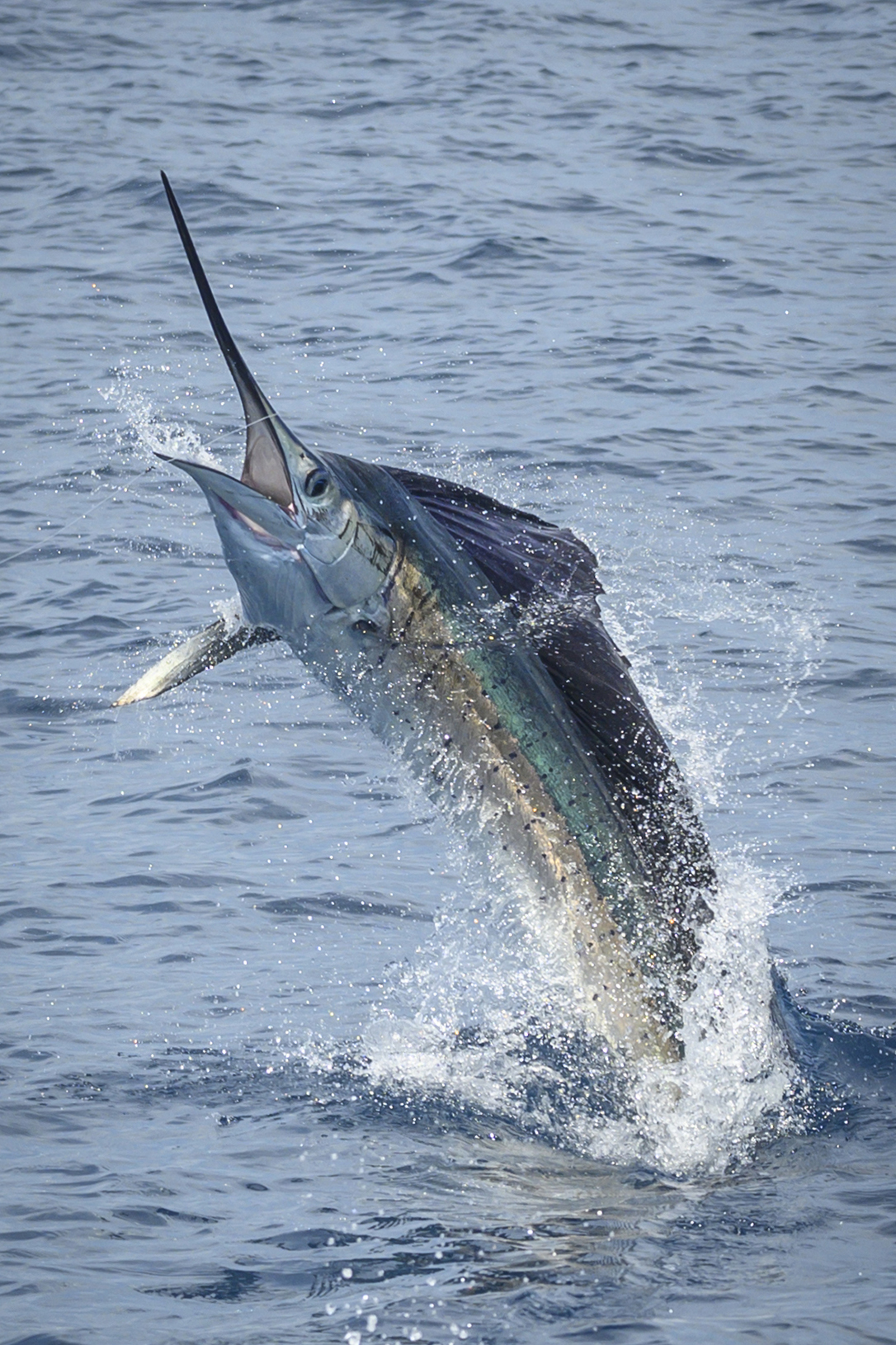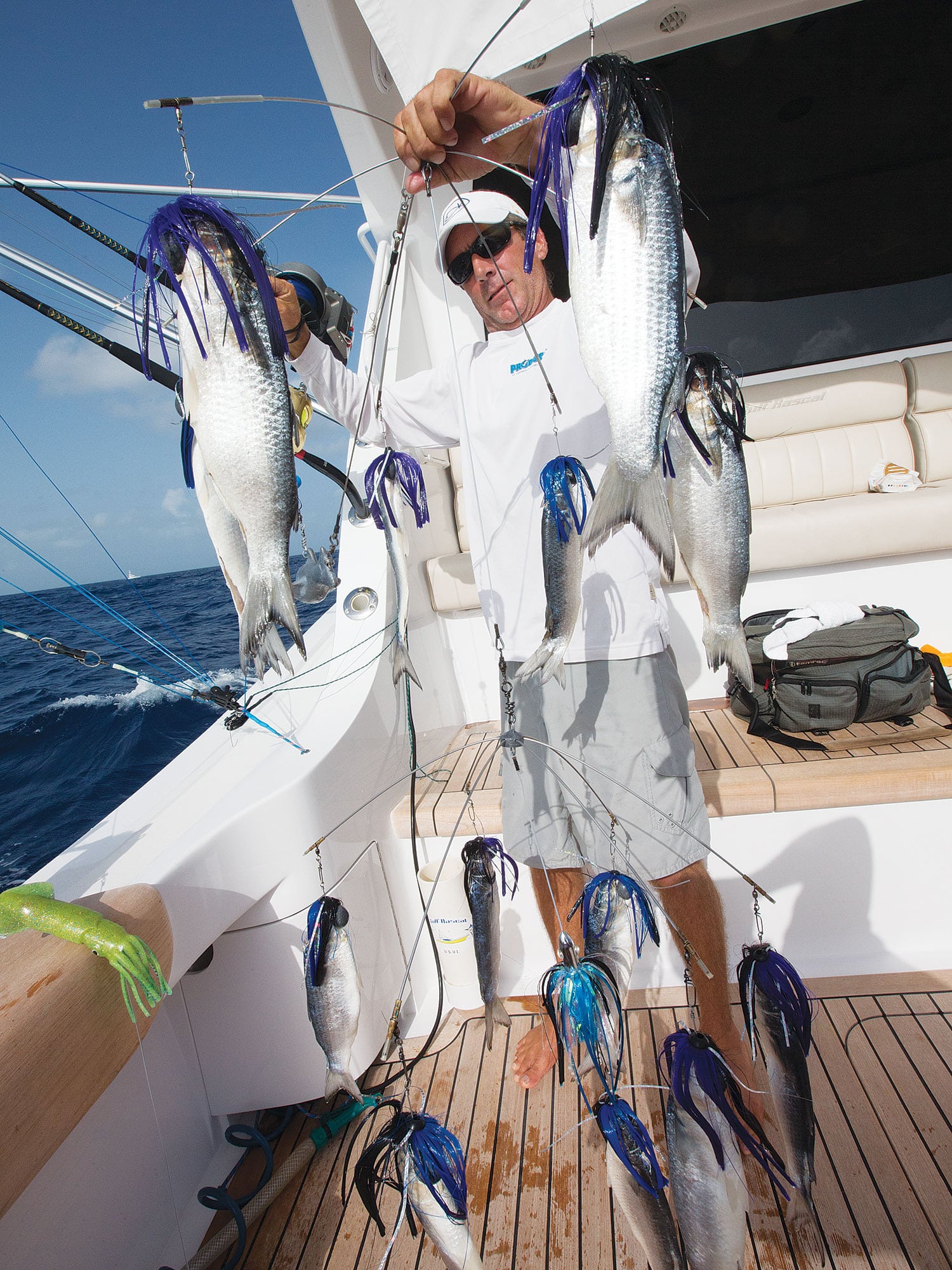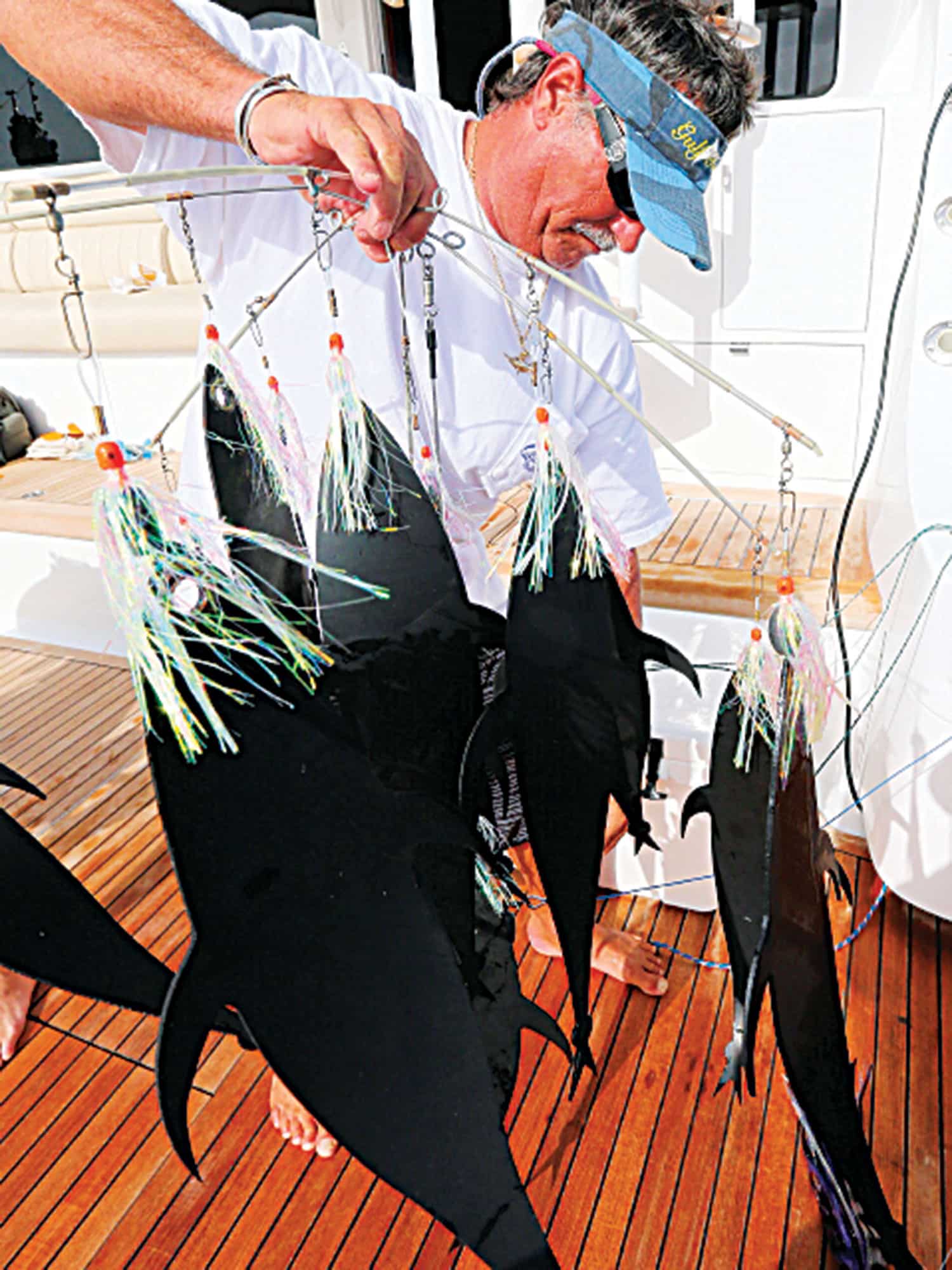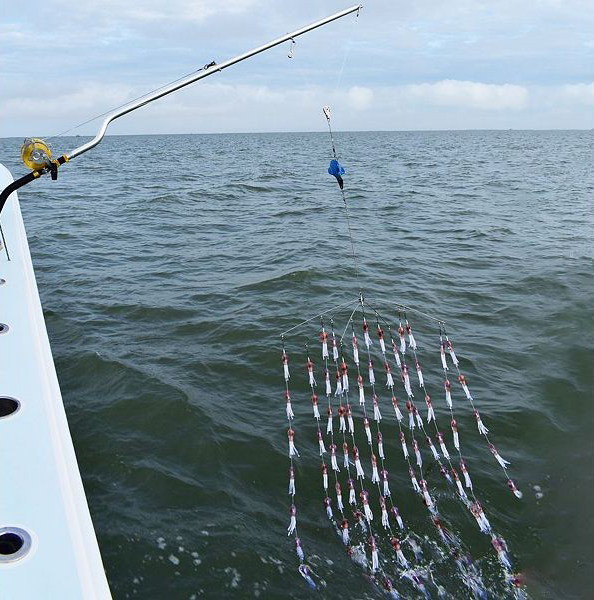By Sam White
The concept is a relatively simple one: While trolling offshore, create the illusion of a tightly packed school of baitfish, with enough silhouette and profile to attract the attention of a pack of hungry sailfish, or maybe a prowling blue marlin. As the fish approaches, it spots a nearby bait or lure swimming by itself, an enticing loner that somehow became separated from the school and is now easy prey.

Originally designed to attract sailfish like this one, dredge-style teasers are remarkably effective for a wide range of pelagic species, including marlin, sails and mahimahi.
The Early Years
The first sailfish dredges were modified striped bass umbrella rigs, with four arms and a single tier of large silver mullet; with a large trolling weight to keep it swimming below the surface, it was either cleated off at the transom or pulled using a manual downrigger for retrieval. Simple yet effective, those early adopters of what became known as a dredge went on to win scores of sailfish tournaments in South Florida before the rest of the fleet caught on. It’s a pretty amazing concept for a hookless teaser, and one that caught on quickly before spreading throughout the sport-fishing world.
Those early years drove what came to be known as the arms race in dredge fishing. If a single tier was good, two was better. Today, a professional crew may have two dredges sporting three tiers and 50 or more carefully rigged natural baits, or a giant monstrosity with nearly 100 artificial fish or squid. Increasingly heavier weights are needed to ensure the entire thing stays well below the surface at trolling speeds, and the drag they produce is also immense—rigging systems need to be virtually bulletproof.
In response, companies such as Daiwa, Kristal, Hooker Electric, Miya Epoch and Lindgren Pitman have developed powerful electric reels that can retrieve even the largest dredges and heaviest weights with push-button ease. The dredges themselves have transitioned from thin wire umbrellas to more durable stainless-steel and even titanium construction for increased durability. They’re among the best-selling of any tackle component in the industry today.
Natural versus Artificial Baits
There are generally two choices for dredge baits: natural and artificial. Rigging a full dredge with natural baits, almost always either ballyhoo or mullet but occasionally Spanish mackerel, isn’t for the faint of heart (or wallet), but it’s devastatingly effective when targeting sailfish and white marlin. Mullet and mackerel usually carry a 3-ounce chin weight, while ballyhoo are rigged with a 1.5- to 2-ounce weight. Skirts are optional but can help add both color and flash to the spread. Natural-bait dredges are very popular in the South Florida sailfish fishery as well as for those who are targeting white marlin in the late summer along the East Coast. While the effort and expense is much higher, it’s hard to beat the real thing.

A natural-bait dredge using rigged mullet is popular for species like white marlin on the East Coast.

Using mudflap-style artificials, this dredge can be pulled at higher speeds for blue marlin fishing.
Switching to an all-artificial dredge means blue marlin are high on the target list. An artificial dredge, especially one using mudflap-style silhouettes, can be pulled at a slightly faster speed and is a great bet for blue marlin fishing. This allows you to cover more ground without worrying about natural baits washing out, especially when moving at lure-trolling speeds of 8 knots or more. Mixing in a few natural baits along with their artificial look-alikes is a compromise that works well in places where anglers might see both blue and white marlin. It’s also a more cost-effective option than using three dozen rigged mullet on a triple-tiered all-natural dredge. A mixed dredge is a good way to stretch your bait supply longer into the season, and it’s less labor intensive on the rigging side of the table as well. In this scenario, use natural baits along the outside and artificials on the inner arms to give the dredge a fuller appearance in the water.
Small-Boat Dredges
With an ever-increasing number of large multi-engined center consoles fishing the blue water these days, having the ability to fish multiple dredges just like a larger sport-fisher became critically important. Today, several companies produce a dredge boom system which allows center consoles to deploy the same large, multitiered dredges as their larger, inboard-powered brethren, while also quickly and easily retrieving them once hooked up. Available in six- and eight-foot lengths, these tools allow the dredge to swim effectively outside the boat’s whitewater, where it performs just as well at attracting pelagics to the spread. There are even options for carbon-fiber booms, which are stronger and lighter than the conventional aluminum models. These dredge booms are usually paired with either 12- or 24-volt electric reels, which offer both durability and a speedy retrieve with the push of a button. The auto-stop feature also means the dredge will come into a preset point every time.

A dredge boom can help those fishing from center consoles to pull their gear in the cleaner water outside the wakes.
There is no doubt that the increased use and advancements of the dredge is the single most important technological advancement in sport fishing over the last decade. Far from a mere teaser, these fish-raising magnets are a central part to nearly every operation seriously targeting billfish today.




























